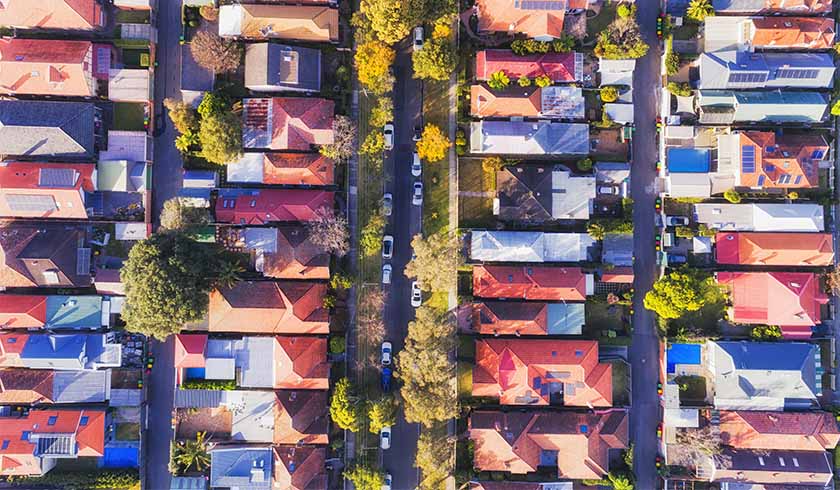Values fall again in February, but at a slower pace
Fresh data shows that property price falls may now be moderating, however even markets previously posting price growth have begun to struggle.

CoreLogic’s Hedonic Home Value Index recorded a national value decline of 0.7 of a percentage point over the month. That equates to declines over 14 of the last 16 months.
However, according to Tim Lawless, head of research at CoreLogic, the rate at which values are dropping has begun to slow.
“The national rate of decline eased relative to January and December, when dwelling values were down by around 1 per cent, however the February results remain overall weak, with the geographic scope of negative conditions broadening,” Mr Lawless said.
“The fact that we are seeing weakening housing market conditions across regions where home values were previously rising at a sustainable pace and where economic conditions are relatively healthy is a sign that tighter credit conditions are having a broad dampening effect on buyer activity.”
Despite the slower rate of price falls in February, he added that there are no signs the market has yet bottomed out.
The largest decline was seen in Darwin, which fell by 1.7 per cent to a median of $397,867.
This was followed by Perth, which declined by 1.5 per cent to a median of $438,952, then Sydney and Melbourne, both at 1 per cent to medians of $789,339 and $629,457, respectively.
Brisbane prices eased at a more modest rate of 0.3 of a percentage point to $490,635, while Canberra dipped 0.2 of a percentage point to $594,351.
Annually, Sydney’s decline reached double digits of 10.4 per cent, with Melbourne not too far behind at 9.1 per cent, although Mr Lawless cautioned the latter is likely to drop to double digits within the next few months.
CoreLogic analysis also found the largest declines were focused on more expensive suburbs of Sydney and Melbourne.
“Many of these regions saw larger capital gains during the upswing but also typically show higher ratios of dwelling values relative to household incomes, implying affordability is stretched in these markets,” Mr Lawless said.
“As lenders become increasingly focused on reducing their exposure to borrowers with high debt levels relative to income, a natural consequence may be even tighter credit availability across these more expensive regions.”
Meanwhile, the more affordable quarter of the market was declining slower than the most expensive quarter, with the most affordable quarter for the last 12 months declining by 2.6 per cent, as opposed the most expensive quarter falling by a much sharper 10.7 per cent.
Mr Lawless said this difference in the quarters was likely due to first home buyers
“The stronger conditions across the more affordable properties can be explained by the surge in first home buyer activity in these cities, as these buyers take advantage of stamp duty concessions available in NSW and Victoria,” he said.
“Another factor could be that lenders are likely reducing their exposure to borrowers with high debt levels relative to their incomes which could be skewing demand towards the middle to lower end of the housing market in the most expensive cities.”
Rents
Rental conditions for the month saw improvements across every capital city market, except for Darwin, yet are slowing with rates up 0.3 of a percentage point for the month and 0.4 of a percentage point for the year.
Canberra and Hobart were the tightest markets, with tenants paying 4.7 per cent and 4.6 per cent more respectively for the last 12 months, while Darwin and Sydney saw the worst conditions, with rents actually falling by 6.1 per cent and 2.9 per cent, respectively.
Gross yields however have seen a slight improvement across the capital cities, sitting at 3.81 per cent for the last 12 months to February 2019, with the exception of Hobart, which saw its gross rental yield decline to 5 per cent.
Finance
The analysis of RBA and ABS financing data indicated a decline in the flow of credit and mortgage activity, with a particularly large drop seen in owner-occupier growth since the latter half of 2018, which is concerning. said Mr Lawless.
“While a slowdown in investment was a key driver of slowing housing markets since 2015, the recent decline in owner-occupier lending is far more significant, considering owner occupier lending is more than twice the value of investment lending,” he said.
“The long-running reduction in investment lending has understandably impacted the Sydney and Melbourne housing markets more than others, considering investment activity was heavily concentrated in these cities, however the reduction in owner-occupier credit explains a lot about the broader softening in housing market conditions more recently.
“Stricter lending standards are a logical outcome following the royal commission and we are likely in the early phases of a ‘new normal’ for mortgage lending where borrowers will face closer scrutiny around their expenses and ability to service a loan and conversion rates on loan applications are likely to remain lower than they have been over prior years.”
